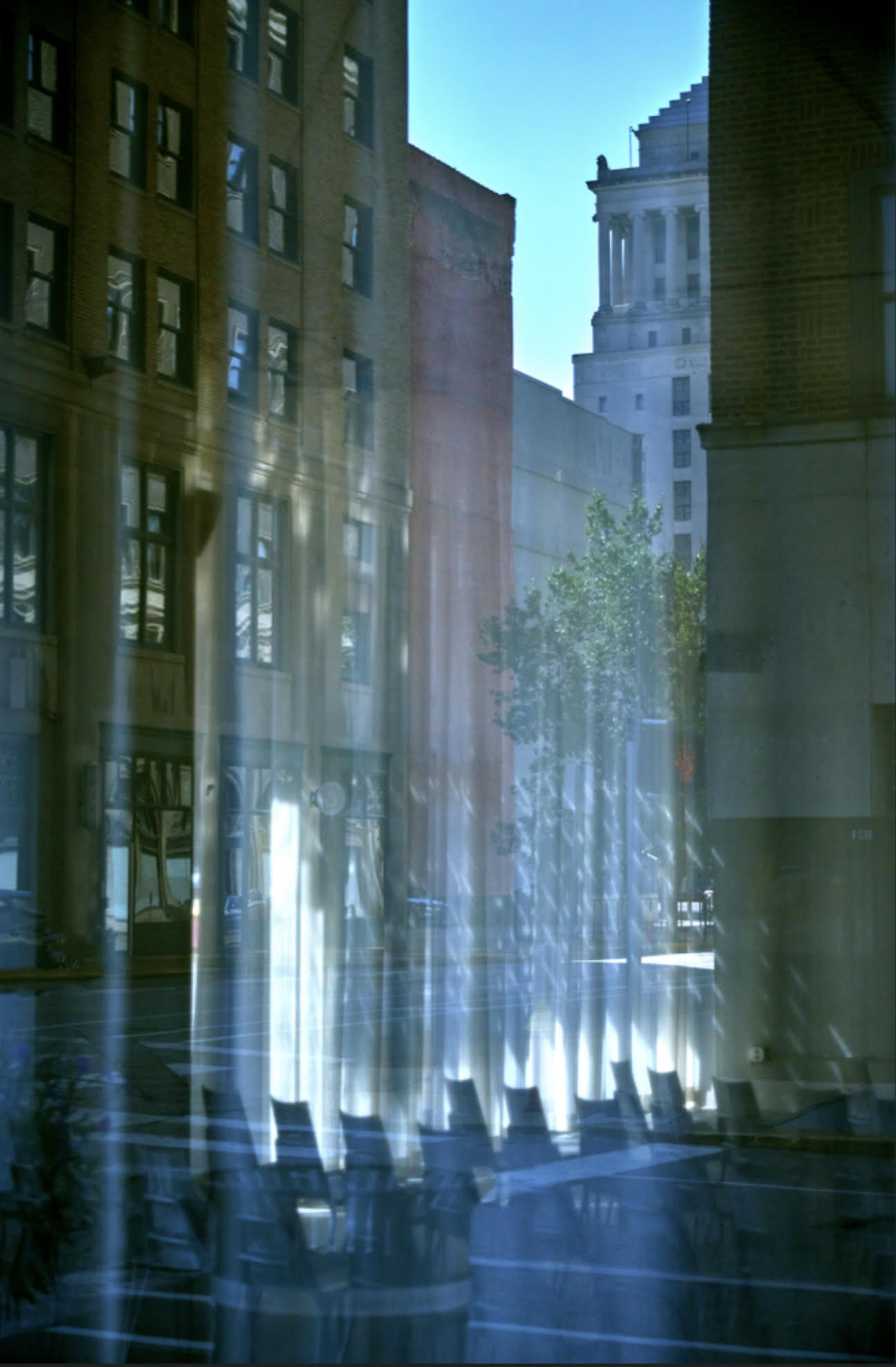
(Photo by Michael Eastman)
Michael Eastman, a fine-art photographer who spends days finding just the right shot, just the right light, then works in post-production to turn his images into painterly masterpieces—has been running around the streets of St. Louis with a little Canon digital camera. He hunts down glass walls, windows, doors—anything that reflects.
As a culture, we no longer do.
Pulled a hundred ways for Sunday, we tend to lope after shiny distractions instead of staying put and thinking about our thoughts. My Jesuit professors called that process awareness of awareness, explaining that it made us human—and could keep us out of trouble. I thought about A of A (his blackboard shorthand) the other day, when a friend told me her daughter was all emotion and had no internal monologue, no way of talking herself through upset, thinking about what she was experiencing as it unfolded, curbing impulses with reason and soothing herself with a little healthy rationalization of any slight, failure, or disappointment. I live by self-talk; I cannot imagine facing the world without it.
Scrolling through Eastman’s mysterious, often beautiful and surprising images, I love what they reveal—and how they compare to thought itself. Here, as in our minds, what is reflected is less intense, less urgent, than raw experience. Filtered through another medium, it arrives more softly, open to interpretation and rich with imaginative possibilities. It has the looseness of a dreamy, musing cast of mind.
He calls the portfolio of these images “Unseen,” but really, they are seen through. The reflections are shimmered, blurred, fogged, layered, textured, or cracked by what reflects them. Maybe there is plastic over the window, and the trees are broken by its folds. Maybe rain on the glass streaks tears down someone’s face, or a blue tint changes the city’s mood. Reflection operates on two levels at once: it recaptures experience and adds information, framing the scene in a manageable size and rendering it both meaningful and mysterious. Sometimes what appears is startling and novel, holding or reconciling a contradiction.
Visually, all a reflection has to do is bounce back an image, altered and authentic at once. But for us, reflection, like that great religious word “discernment,” requires thoughtful deliberation. What did I feel? What did I learn? What do these impressions or emotions tell me about the world, about myself, about whatever decision I am trying to make? Artists use reflections to add depth to a scene. Our reflections add depth to whatever our senses bring us. They use our thoughts as ballast, adding them to raw emotion to keep us stable. That equilibrium makes it possible to act with integrity and consistency.
Reflection is the opposite of distraction. The opposite of impulsivity. The opposite of blind, atavistic selfishness. Done right, it stops us from lying to ourselves. Sometimes what it tells us is terrifying, like the portrait that mirrored Dorian Gray’s moral dissolution. But it is the hallmark of the examined life, the only one Socrates thought worth living.
The word comes from the Latin reflectere, meaning “to bend back.” Already, it sounds counterculture. Americans lurch forward, fast as we can, and keep moving, hurdling obstacles at full tilt. Reflection requires—and here is the rub—time, focus, and an uninterrupted block of silence.
What an inconceivable luxury.
Employees roll their eyes at staff retreats; kids sigh when assigned a “reflection paper.” Even a speaker’s suggestion to “take a few minutes now to think” or a wellness coach’s urging of mindfulness can chafe. But reflection is not a gimmick or an add-on. It is essential. “We don’t learn from experience,” remarked John Dewey. “We learn from reflecting on experience.” Aristotle saw reflection as the start of the practical wisdom we need for ethics and solid decision-making. And even in this sped-up, technocentric world, we still need ethics and solid decision-making.
Granted, there is such a thing as too much reflection. “‘I think, therefore I am’ is the statement of an intellectual who underrates toothaches,“ wrote Milan Kundera. Technology feels like a door to the cosmos, but its screens lock us inside our own brain. There, we can construct a reality unchallenged by any facts we choose to exclude—or do not know. This makes life much easier, just as texting is easier than talking face-to-face and asking an AI chatbot is easier than reaching out to a human being seasoned by years of experience.
Reflection feeds on experience. The process does not work if you use it to avoid experience. Then all you are doing is spinning around in there, inventing an ersatz wisdom, the way people insist they know God’s will because of what their own thoughts and feelings have told them.
There are a million shortcuts to knowledge—we can click or chat our way to the facts. But there are no shortcuts to wisdom.
Read more by Jeannette Cooperman here.
